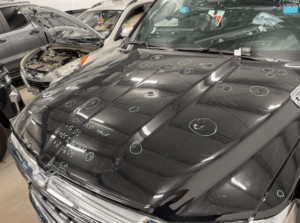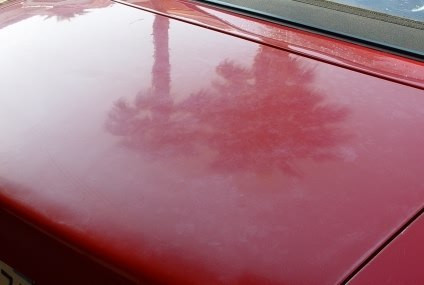How to Fix Car Exhaust Leak: A Comprehensive Guide
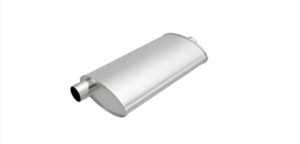
An exhaust leak can be a nuisance, but more importantly, it poses significant risks to your vehicle’s performance, fuel efficiency, and your health. This detailed guide from CARDIAGTECH.NET will show you how to fix car exhaust leaks effectively. We’ll cover identifying symptoms, understanding the risks, and step-by-step repair methods. We will also highlight the essential tools and equipment available at CARDIAGTECH.NET that can make this task easier and more efficient.
1. Understanding Car Exhaust Leaks
The exhaust system is crucial for managing and expelling harmful gases produced during combustion, treating them before release into the environment, and reducing noise. When this system is compromised, you have an exhaust leak.
An exhaust leak happens when there is a breach in the exhaust system, allowing exhaust gases to escape before reaching the tailpipe. Early detection is key to preventing further damage to your vehicle.
1.1 Common Symptoms of an Exhaust Leak
Identifying an exhaust leak early can prevent further damage to your vehicle. Here are some common signs:
- Unusual Noises: Hissing, popping, or roaring sounds coming from under the car.
- Reduced Engine Performance: Noticeable drop in acceleration or overall power.
- Poor Fuel Economy: More frequent trips to the gas station.
- Check Engine Light: Illumination on your dashboard.
- Exhaust Odor: A strong smell of exhaust inside or around the vehicle.
- Visual Signs: Soot or dark residue around exhaust components.
1.2 Causes of Exhaust Leaks
Exhaust leaks can arise from various issues:
- Corrosion and Rust: Moisture and road salt are frequent culprits, leading to rust.
- Damaged Gaskets: Worn-out gaskets between exhaust components can lead to leaks.
- Physical Damage: Road debris or accidental impacts can crack or puncture the exhaust system.
- Loose Connections: Clamps and bolts can loosen over time.
- Cracked Manifold: Exposure to extreme temperatures can cause the manifold to crack.
- Faulty Welds: Weak or corroded welds in the exhaust system.
1.3 Potential Risks of Ignoring Exhaust Leaks
Ignoring an exhaust leak can lead to severe problems:
- Health Hazards: Toxic gases like carbon monoxide can leak into the cabin, posing health risks such as headaches, dizziness, and nausea. According to the Environmental Protection Agency (EPA), carbon monoxide is a colorless, odorless gas that can be fatal.
- Environmental Impact: Leaks prevent the catalytic converter from filtering out pollutants, leading to higher emissions.
- Reduced Fuel Efficiency: Exhaust leaks can decrease fuel efficiency as the engine works harder to compensate for the loss of pressure.
- Engine Damage: Excessive heat from a leak can damage nearby engine components.
- Failed Emissions Test: An exhaust leak can cause your vehicle to fail emissions tests, leading to fines or the inability to register your vehicle.
- Increased Noise Pollution: The vehicle can become louder, contributing to noise pollution.
2. Diagnosing an Exhaust Leak
Before you can fix an exhaust leak, you need to pinpoint its exact location. Here are several methods to help you diagnose the problem:
2.1 Visual Inspection
Start with a thorough visual inspection:
- Check for Soot: Look for black soot or residue around joints, connections, and welds.
- Inspect for Cracks: Examine the exhaust manifold, pipes, muffler, and catalytic converter for visible cracks or holes.
- Look for Rust: Check for excessive rust, especially at joints and seams.
2.2 Auditory Inspection
Listen carefully to the sounds your car makes:
- Cold Start: Start the engine cold and listen for hissing or popping sounds, which are often more noticeable before the exhaust system heats up and expands.
- Listen Closely: Use a stethoscope or a length of hose to listen closely to different parts of the exhaust system while the engine is running.
2.3 The Soap Bubble Test
This method helps identify small leaks:
- Mix Soap and Water: Mix soap and water in a spray bottle.
- Apply to Exhaust System: Spray the mixture on joints, welds, and potential leak areas.
- Observe for Bubbles: Look for bubbles forming while the engine is running, indicating a leak.
2.4 The Smoke Test
A smoke test is a more advanced method:
- Use a Smoke Machine: A smoke machine pumps smoke into the exhaust system.
- Identify Leaks: Watch for smoke escaping from any cracks or holes.
- Professional Assistance: This test is often performed by professional mechanics.
2.5 The Paper Test
This simple test can help locate leaks:
- Start the Engine: Start the engine and let it idle.
- Use a Piece of Paper: Hold a piece of paper near the exhaust pipe joints and suspected leak areas.
- Observe Movement: If the paper flutters or moves, it indicates a leak.
2.6 Using an OBD-II Scanner
Connect an OBD-II scanner to your vehicle’s diagnostic port:
- Read Error Codes: Check for error codes related to the oxygen sensor or catalytic converter, which can indicate an exhaust leak.
- Monitor Sensor Readings: Monitor live data from the oxygen sensors to see if the readings are abnormal.
3. Essential Tools and Equipment from CARDIAGTECH.NET
To effectively fix a car exhaust leak, you’ll need the right tools and equipment. CARDIAGTECH.NET offers a wide range of high-quality tools that can make the job easier and more efficient.
3.1 Safety Gear
- Safety Glasses: Protect your eyes from debris and chemicals.
- Gloves: Protect your hands from heat, sharp edges, and chemicals.
- Respirator: Protect your lungs from harmful exhaust fumes.
- Ear Protection: Protect your ears from loud noises.
3.2 Basic Hand Tools
- Socket Set: For removing and tightening bolts and nuts.
- Wrench Set: Including open-end, box-end, and adjustable wrenches.
- Screwdrivers: Both flathead and Phillips head.
- Pliers: Including slip-joint, needle-nose, and locking pliers.
- Hacksaw or Exhaust Cutter: For cutting exhaust pipes.
- Rubber Mallet: For gently tapping components into place.
- Pry Bar: For leverage when removing stubborn parts.
- Torque Wrench: For tightening bolts to the correct specification.
3.3 Specialty Tools
- Exhaust Pipe Expander: For expanding exhaust pipes to fit over other components.
- Exhaust Hanger Removal Tool: For removing rubber exhaust hangers without damage.
- Oxygen Sensor Socket: For removing and installing oxygen sensors.
- Welding Equipment: For repairing cracks and holes in exhaust pipes.
- Smoke Machine: For locating leaks in the exhaust system.
- OBD-II Scanner: For reading diagnostic codes and monitoring sensor readings.
3.4 Consumables
- Penetrating Oil: For loosening rusted bolts and nuts.
- Exhaust Sealer: For sealing joints and connections.
- Exhaust Wrap: For repairing small leaks and insulating exhaust pipes.
- Replacement Gaskets: For sealing joints between exhaust components.
- Anti-Seize Compound: For preventing bolts and nuts from seizing.
4. Step-by-Step Guide to Fixing a Car Exhaust Leak
Once you’ve diagnosed the leak and gathered the necessary tools, follow these steps to fix the problem.
4.1 Preparation
- Safety First: Wear safety glasses, gloves, and a respirator.
- Cool Down: Allow the exhaust system to cool down completely before starting any work.
- Raise the Vehicle: Use a jack and jack stands to safely lift the vehicle.
- Locate the Leak: Confirm the location of the exhaust leak.
4.2 Removing Damaged Components
- Loosen Fasteners: Apply penetrating oil to any rusted bolts or nuts and let it soak for a few minutes.
- Remove Bolts and Nuts: Use a socket or wrench to remove the fasteners. If they are too difficult to remove, try heating them with a torch or using a bolt extractor.
- Disconnect Components: Carefully disconnect the damaged component from the exhaust system.
- Remove Hangers: Use an exhaust hanger removal tool to remove the rubber hangers.
4.3 Cleaning and Preparing Surfaces
- Clean Surfaces: Use a wire brush or scraper to clean any rust, dirt, or old gasket material from the mating surfaces.
- Inspect Mating Surfaces: Check the mating surfaces for any damage or warping. If necessary, use a file or grinder to smooth them out.
4.4 Repairing or Replacing Components
- Welding: If the leak is a small crack or hole, you may be able to weld it shut. Clean the area thoroughly and use a MIG or TIG welder to fill the crack.
- Exhaust Wrap: For small leaks, wrap exhaust wrap around the damaged area. Secure it with clamps.
- Replacement: If the component is severely damaged, replace it with a new one.
4.5 Installing New Gaskets and Components
- Install New Gaskets: Place a new gasket between the mating surfaces.
- Connect Components: Carefully connect the components and align the bolt holes.
- Install Fasteners: Install the bolts and nuts and tighten them to the correct torque specification using a torque wrench.
- Reinstall Hangers: Reinstall the rubber exhaust hangers.
4.6 Final Checks
- Inspect Connections: Double-check all connections to make sure they are secure.
- Start the Engine: Start the engine and listen for any leaks.
- Soap Test: Apply the soap bubble test to confirm that the leak has been repaired.
- Lower the Vehicle: Lower the vehicle and take it for a test drive.
5. Advanced Repair Techniques
For more complex exhaust leak issues, consider these advanced techniques:
5.1 Welding Techniques
Welding is a permanent solution for repairing cracks and holes in exhaust components.
- MIG Welding: Metal Inert Gas (MIG) welding is a versatile and easy-to-learn welding process. It’s suitable for welding exhaust pipes and manifolds.
- TIG Welding: Tungsten Inert Gas (TIG) welding provides more precision and control. It’s ideal for welding thin materials and intricate joints.
5.2 Using Exhaust Sealants
Exhaust sealants are useful for sealing minor leaks and joints.
- High-Temperature Sealants: These sealants can withstand high temperatures and are ideal for exhaust systems.
- Application: Apply the sealant to the joint or leak area, ensuring a uniform coating.
- Curing Time: Allow the sealant to cure according to the manufacturer’s instructions.
5.3 Replacing Exhaust Manifold
Replacing the exhaust manifold can be complex but is necessary if the manifold is severely damaged.
- Remove Heat Shields: Remove any heat shields covering the exhaust manifold.
- Disconnect Sensors: Disconnect any sensors attached to the manifold.
- Remove Bolts: Remove the bolts holding the manifold to the engine.
- Install New Manifold: Install the new manifold and tighten the bolts to the correct torque specification.
5.4 Catalytic Converter Replacement
A damaged or clogged catalytic converter can cause exhaust leaks and performance issues.
- Disconnect Flanges: Disconnect the flanges connecting the catalytic converter to the exhaust system.
- Remove Old Converter: Remove the old catalytic converter.
- Install New Converter: Install the new catalytic converter and tighten the flanges.
6. Maintenance Tips to Prevent Future Exhaust Leaks
Preventive maintenance can save you time and money by avoiding future exhaust leaks:
- Regular Inspections: Inspect your exhaust system regularly for signs of rust, cracks, or leaks.
- Tighten Connections: Check and tighten all bolts and clamps periodically.
- Replace Worn Components: Replace worn gaskets and hangers promptly.
- Avoid Harsh Chemicals: Avoid using harsh chemicals that can corrode the exhaust system.
- Protective Coatings: Apply protective coatings to prevent rust and corrosion.
6.1 Regular Inspection Schedule
| Inspection Frequency | Task |
|---|---|
| Monthly | Visual inspection for rust and damage |
| Every 6 Months | Check and tighten bolts and clamps |
| Annually | Replace worn gaskets and hangers |
6.2 Best Practices for Exhaust System Care
- Avoid Short Trips: Short trips can cause condensation to build up in the exhaust system, leading to rust.
- Use High-Quality Fuel: High-quality fuel burns cleaner and reduces the buildup of deposits in the exhaust system.
- Address Issues Promptly: Address any exhaust system issues promptly to prevent further damage.
7. Why Choose CARDIAGTECH.NET for Your Automotive Needs
CARDIAGTECH.NET is your trusted partner for all your automotive needs. Here’s why you should choose us:
- High-Quality Products: We offer a wide range of high-quality tools and equipment from leading manufacturers.
- Competitive Prices: We offer competitive prices to help you save money.
- Expert Advice: Our team of experienced professionals can provide expert advice and support.
- Excellent Customer Service: We are committed to providing excellent customer service.
- Convenient Online Shopping: Our online store makes it easy to shop for the tools and equipment you need.
We understand the challenges you face as automotive technicians, from demanding physical work to the need for continuous learning. That’s why we provide tools and equipment that enhance efficiency, accuracy, and safety. By choosing CARDIAGTECH.NET, you’re investing in solutions that help you overcome these challenges and excel in your profession.
8. Call to Action
Don’t let an exhaust leak compromise your vehicle’s performance and your health. Contact CARDIAGTECH.NET today for expert advice and high-quality tools to fix your exhaust leak quickly and efficiently.
Address: 276 Reock St, City of Orange, NJ 07050, United States
WhatsApp: +1 (641) 206-8880
Website: CARDIAGTECH.NET
Our knowledgeable team is ready to assist you in selecting the right tools and equipment for your specific needs. Whether you’re dealing with a minor exhaust leak or a major repair, we have the solutions to help you get the job done right.
Contact us now and experience the CARDIAGTECH.NET difference. We are dedicated to providing top-notch products and services that meet the demands of today’s automotive professionals.
9. Frequently Asked Questions (FAQs)
-
What are the common signs of an exhaust leak?
Common signs include unusual noises (hissing, popping, roaring), reduced engine performance, poor fuel economy, check engine light, exhaust odor, and visual signs like soot or dark residue.
-
Can an exhaust leak affect my vehicle’s fuel efficiency?
Yes, an exhaust leak can reduce fuel efficiency because the engine works harder to compensate for the improper expulsion of exhaust gases.
-
Are exhaust leaks dangerous to my health?
Yes, exhaust leaks can be very dangerous. They may allow carbon monoxide and other toxic gases to enter the vehicle cabin, posing serious health risks including headaches, dizziness, and even long-term respiratory issues.
-
How can I detect an exhaust leak at home?
You can detect an exhaust leak by conducting a visual inspection for black soot or cracks, listening for unusual sounds, and paying attention to changes in vehicle performance and fuel efficiency.
-
What should I do if I suspect an exhaust leak in my car?
If you suspect an exhaust leak, it’s important to address it promptly. You can start with a DIY inspection, then make any repairs necessary in a timely fashion or seek professional help.
-
Can I use exhaust tape to fix a leak temporarily?
Yes, exhaust tape can be used for temporary fixes on small leaks. However, it’s not a permanent solution and should be replaced with a proper repair as soon as possible.
-
What tools do I need to fix an exhaust leak?
Essential tools include safety glasses, gloves, a socket set, wrench set, screwdrivers, pliers, a hacksaw or exhaust cutter, penetrating oil, exhaust sealer, replacement gaskets, and a torque wrench.
-
How often should I inspect my exhaust system?
You should inspect your exhaust system monthly for visual signs of rust and damage and every six months for checking and tightening bolts and clamps.
-
What is the purpose of the catalytic converter?
The catalytic converter reduces harmful emissions by converting pollutants into less toxic substances, helping your vehicle meet environmental standards.
-
Where can I find high-quality tools and equipment for fixing exhaust leaks?
You can find a wide range of high-quality tools and equipment at competitive prices at CARDIAGTECH.NET.
10. Conclusion
Fixing a car exhaust leak is crucial for maintaining your vehicle’s performance, fuel efficiency, and your health. By following this comprehensive guide and using the right tools and equipment from CARDIAGTECH.NET, you can effectively diagnose and repair exhaust leaks, ensuring your vehicle runs smoothly and safely. Remember to prioritize safety and address any issues promptly to prevent further damage and health hazards. Contact CARDIAGTECH.NET today for all your automotive needs and expert support.
 Muffler
Muffler
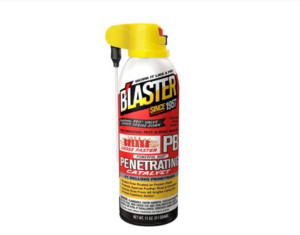 Penetrating Oil
Penetrating Oil
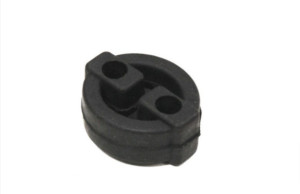 Exhaust Hanger
Exhaust Hanger



